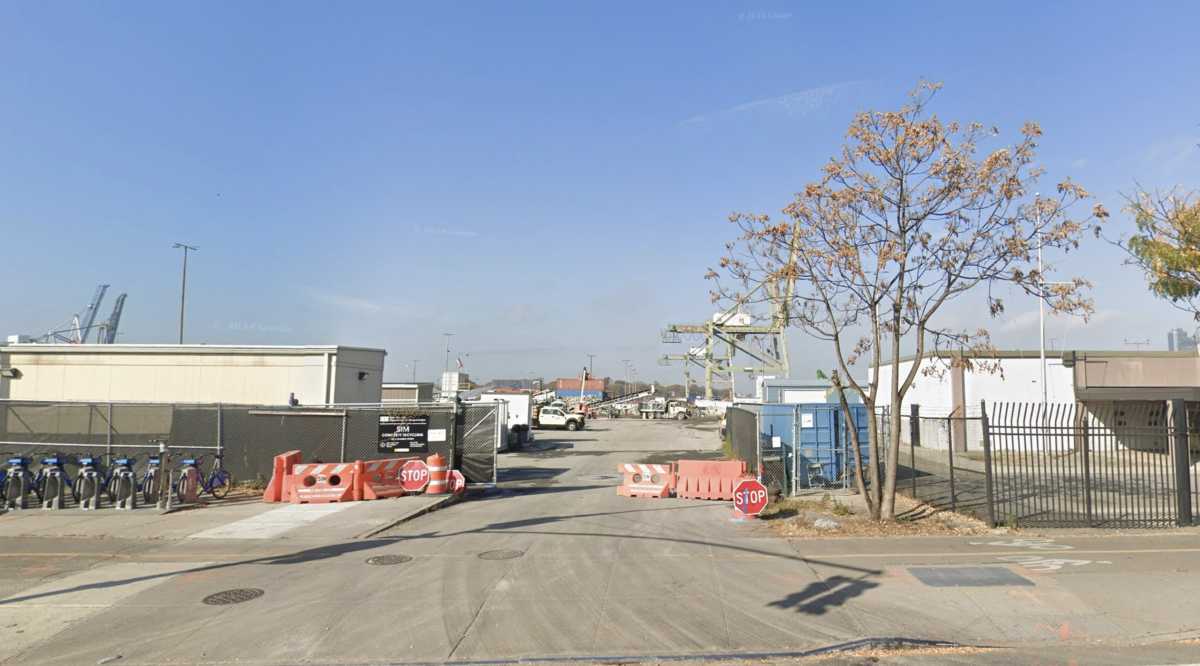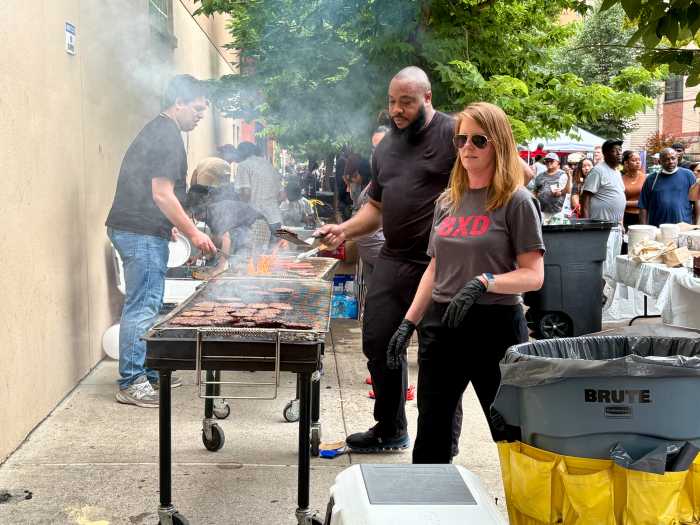
BY DUSICA SUE MALESEVIC | It had all the makings of a typical teen party — pizza and soda, excited chatter and, of course, young people. It was no party, though, but rather a meeting to discuss a serious commitment that some adults would shy away from: serving on a community board.
On Fri., Jan. 23, Manhattan Borough President Gale Brewer hosted an informational session for young people interested in serving on their community board. Last August, Governor Andrew Cuomo signed into law legislation that allows 16- and 17-years-old to be members of a New York City community board.
As the application for this year is about to draw to a close — Jan. 30 at 5 p.m. is the deadline — this will be the first time that teenagers can apply and be legally appointed.
In a packed room at her 1 Centre St. office, Brewer started the meeting by talking about the long road that led to the legislation’s passage. Brewer, who was a part of a community board for 10 years, said she first got the idea when she was a city councilmember and thought about having teenagers younger than 18 vote.
“We should have young people vote in city elections,” she said.
When that idea failed to gain support — although she says she hasn’t given up on it — she turned her sights to 16- and 17-years-old being a part of the community boards.
“It’s a huge deal,” declared Brewer, who said that the teens could be a part of “real stuff that goes on in the neighborhood. I am so excited to have all of you here,” she told the group.
The law applies to the city’s 55 community boards. Manhattan has 12 boards, and every year there are up to 300 seats potentially open. Each member serves a two-year term, and the borough president and local city councilmembers select them. Half of the members are up for reappointment each year.
Brewer said the majority of community boards have been receptive, albeit with some a little nervous about the prospect of teens serving. She said later that some board chairpersons may have to be sensitized to the issue.
“I’ve been to thousands of community board meetings in my lifetime and there is not a youth voice,” the borough president stressed. “The young people in some of these high schools are extraordinary. They’re voice needs to be out there.”
Brewer said she thinks the youth can add “realistic agendas, things that need to be addressed.”
There have already been several meetings to generate interest and Brewer said one in Washington Heights turned out 50 young people. Naturally, she said, the teens are very interested in youth-related issues.
“When I speak about what the office is doing and I talk about land use and so on and so forth…,” she said. “And then I talk about 16- and 17-years-old, they all start clapping. Land use, nothing. There’s a huge interest.”
At the meeting, each potential applicant took turns introducing him- or herself, stating their age and school or university. They ranged from 15 to 21 and people were from all over Manhattan as well as some from Brooklyn.
Heebong Kim, 17, is a C.B. 1 hopeful and attends Stuyvesant High School in Battery Park City.
“I never felt that I had political capital,” he said. “Especially as a youth where no one votes, I felt like the political scene was really dominated by older persons.”
Passionate about environmental science, Kim lives in Flushing, Queens, but wants to serve on C.B. 1 — he is eligible since he attends school in the district — and has already gone to meetings.
“I didn’t feel that government had a place for me,” he said. “To have a more active role in that process would just be incredible — especially at 17. I never thought I could do this even at 18.”
The meeting gave the teens the opportunity to learn community board basics and ask questions specific to their age and circumstances: balancing board duties with school homework, going off to college and working with mostly adults.
Leila Eliot, 16, was recently selected to be a part of C.B. 3 and talked about her experience of being a teen board member. Brewer said Eliot is the first young person to legally serve on a community board in the United States.
“There is a big lapse in my community,” Eliot said. “There are teenagers who don’t get to say what they feel, say what they think, have a voice in their local community.”
She attends Bard High School Early College, at 525 East Houston St., and talked about how it is difficult to get homework done on nights that she has board meetings and the need for time management.
“It’s definitely a time commitment,” agreed Austin Ochoa, who was 19 when he joined C.B. 4 last year.
Ochoa, now 20, fielded questions about issues community boards tackle. He talked about C.B. 4’s focus on affordable housing and noted that the job is “365 days.”
“It’s going to be interesting to bring the next generation into the fold,” said Ochoa, who attends City College and cites current City Councilmember Corey Johnson, who is a former C.B. 4 chairperson, as one of his idols.
Some of the teens were concerned about leaving for college after serving on the board for a year.
“We’re aware of that and it’s something that we will take into consideration,” said Brewer. “You could also serve a year, and then when you go off, we’ll have to find somebody else. It’s a hard one.”
Brewer said that this doesn’t count against an applicant, and that there could be one, two or three teens serving on a community board.
“We try to look for the best people to represent the neighborhood,” said Brewer. “I am really committed to making sure that every community board has young people on it.”
A school project that focuses on “social action” spurred Hector Hicks, 17, to come to the meeting.
Hicks lives in Midtown and attends Pace High School, at 100 Hester St. The project to help the community got him and his classmates thinking about the park near their school that they frequent, Sara D. Roosevelt Park.
Hicks said the meeting spurred him to find out whether the park is publicly or privately funded and whether they need to go before the community board to get help renovating it. He’s unsure about applying since he is graduating this year, but said, if he did, he would want to join a Lower Manhattan board, instead of one where he lives.
At the meeting, the teens were broken up into four groups for a budget exercise activity. With a $100 million surplus, each member had some time to determine how they would spend the money for certain areas, such as affordable housing or parks.
Then the tricky part: debating and discussing with the group how they wanted to allocate the funds. It was harder than it looked, with one group going down to the wire to make the allocations.
After each group presented what it would spend, Matthew Washington, chairperson of C.B. 11, spoke about his experience of being on a community board.
Washington joined his community board at 22 and at that time, he was the youngest member by 15 years. He was elected chairperson at age 26 and has been at the helm for the past five years.
“I think it’s incredible that you’re all here,” he said. “It’s exciting because we get to give our voice to what is happening in our community.”




































